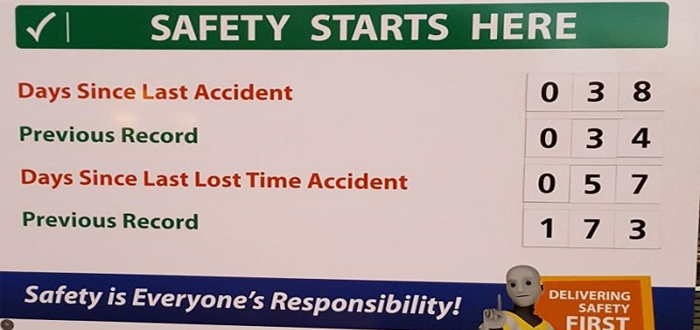-
ROSSLARE EUROPORT TARGETS HEALTH & SAFETY WITH CAMERA TELEMATICS PARTNERSHIP - 2 days ago
-
Landmark Study Reveals Wearable Robotics Significantly Boost Safety and Efficiency in Industrial Environments - July 24, 2024
-
Visku Tackle The Retail Seasonality Challenge One Pallet At A Time - July 22, 2024
-
KAMMAC AND BERGEN LOGISTICS STRENGTHEN FASHION & LIFESTYLE SERVICES IN THE UK - July 19, 2024
-
TENTBOX EXTENDS PARTNERSHIP WITH ARROWXL TO SUPPORT INCREASING DEMAND - July 17, 2024
-
The Perfume Shop improves customer journeys while driving profitability in partnership with Scurri - July 17, 2024
-
ZEROMISSION SECURES £2.3M ($3M) INVESTMENT TO ACCELERATE ELECTRIC FLEETS - July 16, 2024
-
BCMPA CELEBRATES SUCCESS OF 2024 CONFERENCE - July 15, 2024
-
Best of the Best: Jungheinrich Celebrates Triple International Award Win - July 12, 2024
-
GOPLASTICPALLETS.COM CALLS ON NEW CHANCELLOR RACHEL REEVES TO CONSIDER PLASTIC PACKAGING TAX REFORM - July 10, 2024
Health and Safety KPIs: How SMART are they?
Blog by: Gwynne Richards
A couple of weeks ago I walked into a warehouse, and in front of me was a sign which said “42 days since the last reported incident or accident”.
Shortly after, I visited another warehouse and came across this sign:
safety-starts-here-sign.jpg
It got me thinking: How SMART are these performance measures?
Key performance measures should be SMART – Specific, Measurable, Achievable, Relevant and Time-Bound, according to Doran (1981).
S = Specific
The measures are reasonably specific, although in the first article they don’t distinguish between a reported incident and an accident. What is an incident compared to an accident? In the photograph, they do distinguish between the two.
M = Measurable
The performance indicator is measurable because they calculate the number of days since the previous accident up to the current day.
A = Achievable
What is the target? Zero accidents, and therefore the count of days just keeps on climbing? What is an achievable target for such a KPI? This is where I have my doubts about this particular measure.
R = Relevant
How relevant and how useful is this measure? What is it telling employees and visitors? In the second example, looking at the number of days since the last accident and the record, it suggests that accidents, although not resulting in lost time, occur every five weeks or less.
With all the will in the world, warehouse employees are not going to prevent every single incident or accident occurring in the warehouse no matter how many near misses we record and action.
T = Time-bound
The number of days since the last accident/incident is recorded. What about this measure and its effectiveness?
I’m not convinced it is the right measure to have in respect to health and safety within the warehouse. It can be very unfair to the company and doesn’t tell us the whole story. What if the company hasn’t had an accident for five years before this one? Shouldn’t we be congratulating the company on this rather than suggesting that the company had an accident as recently as six weeks ago in the first example and just under six weeks in the second example?
A better measure is the number of recordable cases divided by the total number of hours worked for a specific time period (typically one year). In order to get a realistic figure, the number of cases is multiplied by 200,000.
A second measure is the number of Occupational Safety and Health Administration (OSHA) Lost Time Cases multiplied by 200,000 divided by the total number of hours worked for a specific time period (typically one year).
The definition is occupational injury or illness cases that result in an employee being unable to work a full assigned work shift. That is, the employee is away from work (lost workday). As defined by OSHA, a fatality is not considered a lost-time case. The day of the injury is not included in the count. This is strictly a measure of ‘serious’ cases broken out for comparison.
By utilizing lost work days and taking into account the number of hours worked per employee, surely this is a SMARTER KPI?
Learn more about health and safety with a copy of Warehouse Management – and save 20% with discount code BLGWM20

































